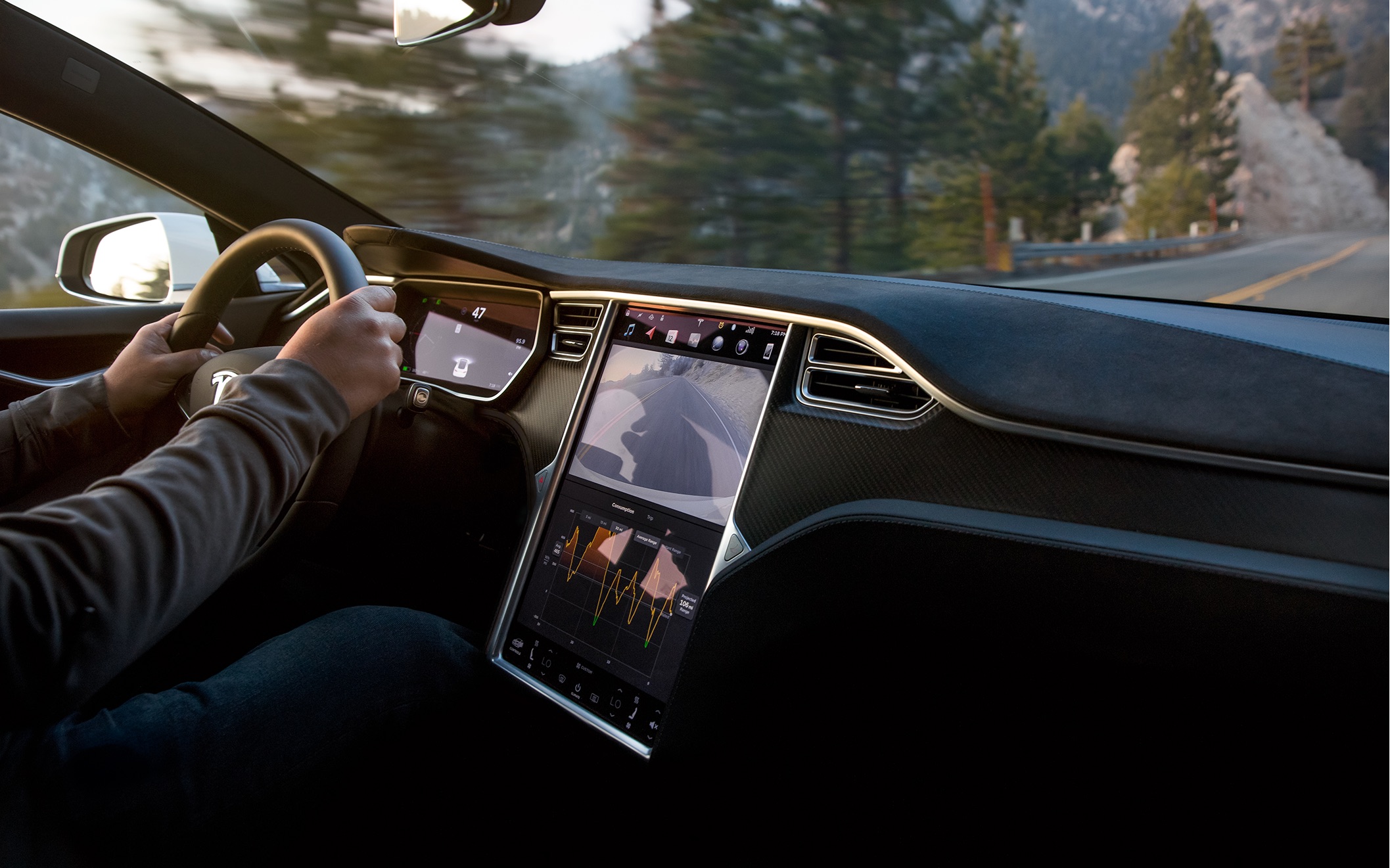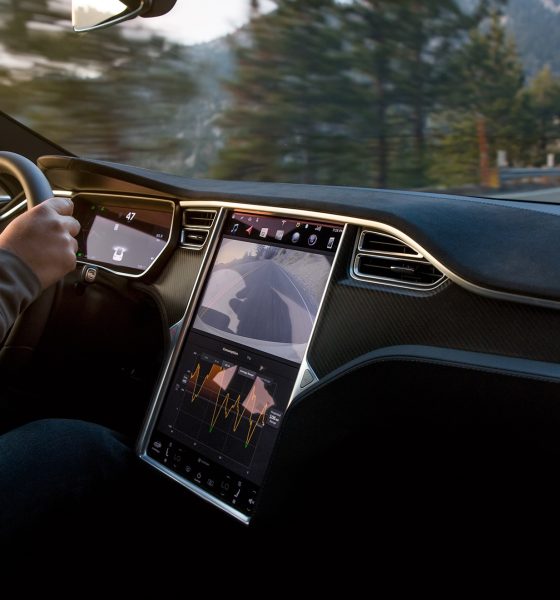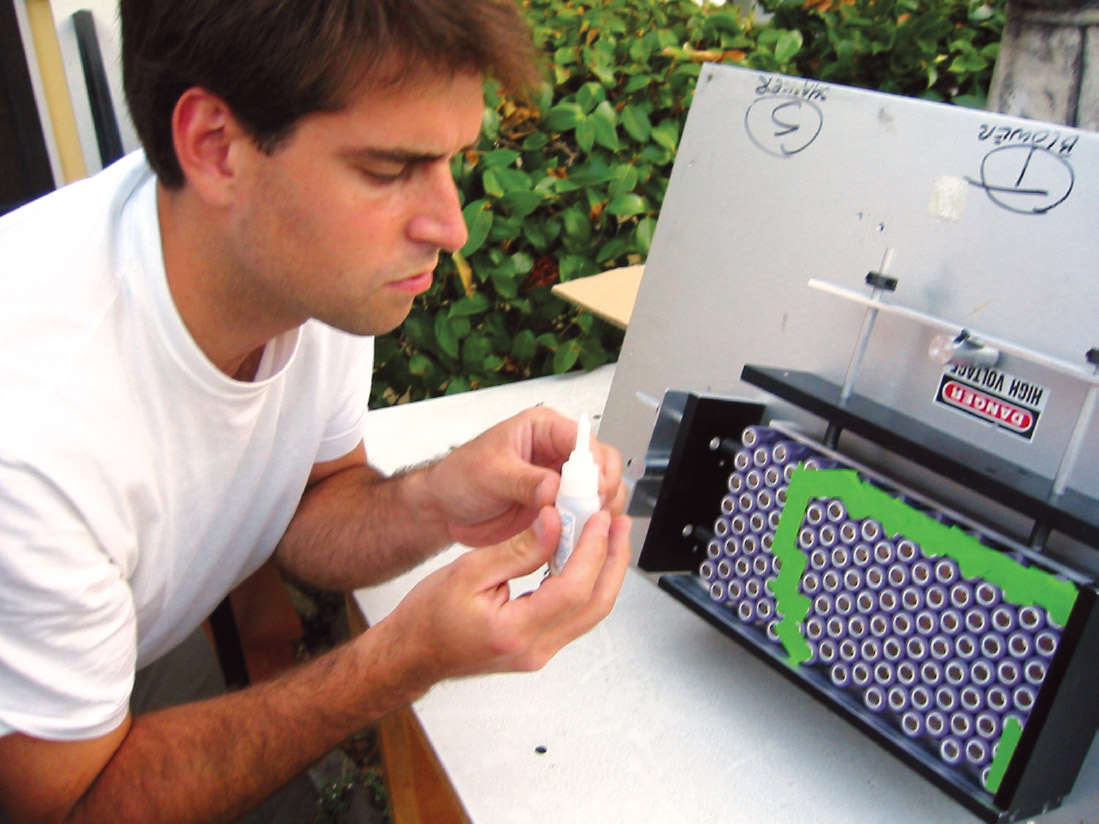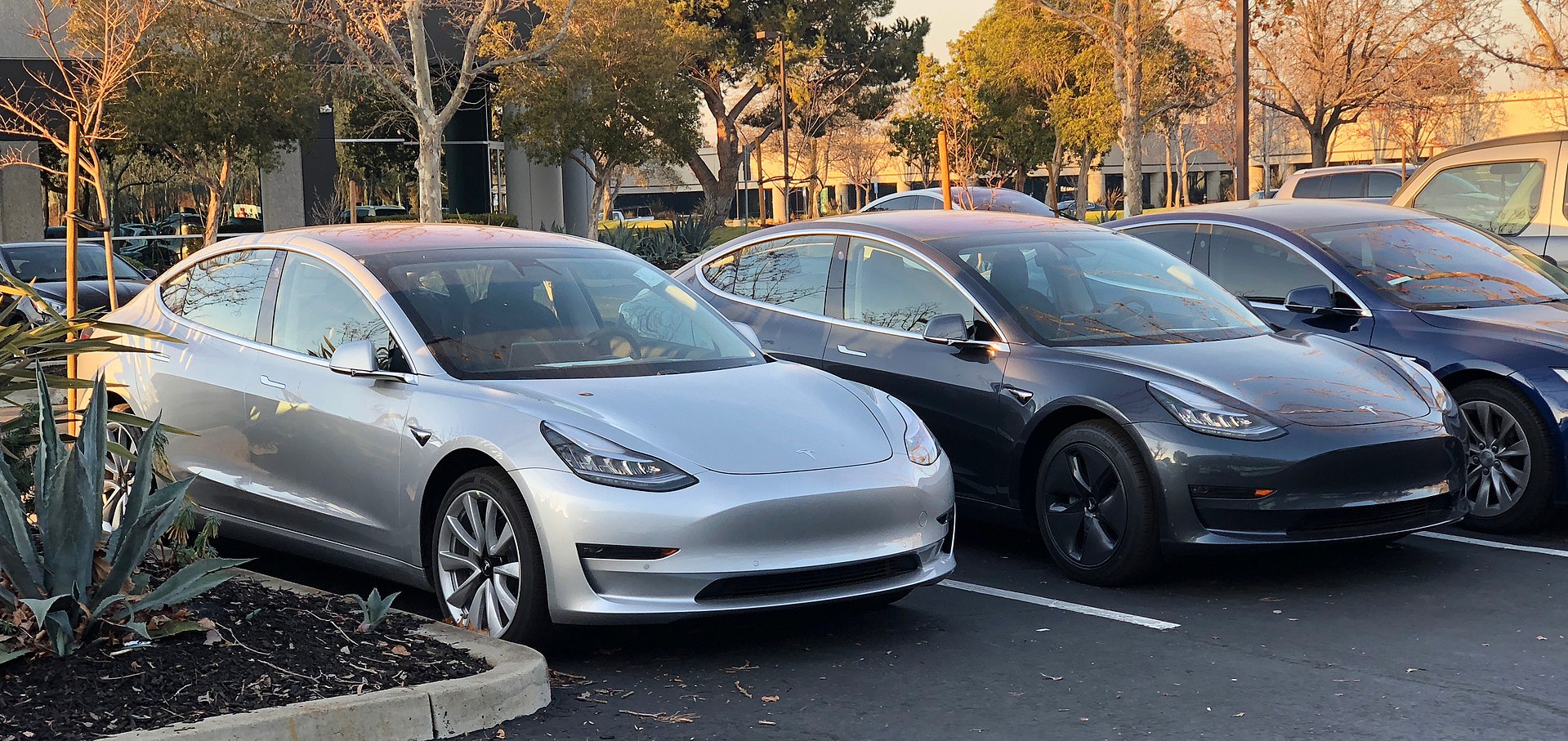

Investor's Corner
Tesla’s battery tech and software push is starting to make sense for veteran vehicle-makers
When Tesla was designing the Model S, the company made it a point to build the vehicle from the ground up. This means that everything, from the electric cars’ battery packs to its software, are manufactured by Tesla itself. Tesla’s approach to electric cars is the auto equivalent of Apple’s strategy with the iPhone and iOS, and it finally seems to be making sense to some legacy vehicle-makers.
Elon Musk’s private space firm, SpaceX, is known for producing its rockets in-house. Musk took this same approach with Tesla in the company’s early days, and the result of this approach was the Model S, a vehicle like no other on the road, with simple, powerful, all-electric internals and a software that is custom-built for the car. A particularly telling image of this hands-on, in-house approach was taken during the company’s younger days, featuring a much younger CTO JB Straubel assembling one of Tesla’s early battery packs by hand.

And in a lot of ways, this strategy worked. Tesla’s in-house approach for the Model S was a key point in the vehicle’s allure to consumers. This carried over to the Model X, and now, the Model 3. With Tesla’s 2170 cells used in the Model 3 gaining rave reviews from teardown experts like Sandy Munro of Munro and Associates, and with the company preparing to release Software Version 9, Tesla is poised to take even bigger steps in its mission to usher the transition to sustainable mobility.
Tesla’s history is rife with criticism and doubts from the veterans of the auto industry, but now that the company has established itself as a leader in the premium electric car segment, its progress and breakthroughs now seem to be undeniable, even to traditional vehicle makers.
Just recently, a report from German publication Electrive emerged, citing insiders from Jaguar who noted that the veteran carmaker will be using Samsung SDI’s cylindrical 2170 battery cells for the electric cars it would produce from 2020 onwards. This is a big step for Jaguar, considering that the I-PACE, its first all-electric vehicle that can actually compete with the Model X 75D and 100D in terms of performance, is currently using pouch cells from LG Chem.
Using Samsung SDI’s 2170 cells for its electric cars’ batteries would likely benefit Jaguar, considering that the I-PACE is currently being bogged down by reports that the vehicle is lacking in efficiency and range. Jaguar might never admit it, but it’s not difficult to infer that the company’s decision to reportedly commit to 2170 cells was partly influenced by Tesla’s progress in its battery tech.

Tesla Model 3s side by side in a parking lot.
Another vehicle-maker is starting to see the value of software and its relationship to hardware. Earlier today, veteran motorcycle maker Harley-Davidson stated that it is planning to open a dedicated research and development facility in Silicon Valley to support its plans for its upcoming line of electric bikes. Harley-Davidson plans to release its first motorcycle, dubbed the “LiveWire,” sometime next year, and it would be the first of a line that features a “twist and go” system. The LiveWire is set to be followed by other electric bikes in 2022 as the company transitions to producing cleaner and possibly even quicker, more powerful vehicles.
Seemingly taking a cue from Tesla, Harley Davidson is now in full throttle recruiting Silicon Valley talent in electrical, software, and mechanical engineering. Just like Jaguar and its decision to commit to 2170 cells, Harley-Davidson’s decision to establish a Silicon Valley-based team seems to be inspired partly by Tesla and its software-focused electric cars.
Tesla is not a perfect company by any means, and its leader, Elon Musk, is not infallible. Musk himself would be the first to admit that Tesla committed a lot of errors in the past, and it is through these failures that the company was able to fail forward. Tesla is now a much more mature electric car maker that knows its market and knows what it’s doing; and if the recent updates from Jaguar and Harley-Davidson are any indication, it appears that other vehicle-makers are now starting to realize the value of Tesla’s experience.

Investor's Corner
Tesla stock closes at all-time high on heels of Robotaxi progress

Tesla stock (NASDAQ: TSLA) closed at an all-time high on Tuesday, jumping over 3 percent during the day and finishing at $489.88.
The price beats the previous record close, which was $479.86.
Shares have had a crazy year, dipping more than 40 percent from the start of the year. The stock then started to recover once again around late April, when its price started to climb back up from the low $200 level.
This week, Tesla started to climb toward its highest levels ever, as it was revealed on Sunday that the company was testing driverless Robotaxis in Austin. The spike in value pushed the company’s valuation to $1.63 trillion.
Tesla Robotaxi goes driverless as Musk confirms Safety Monitor removal testing
It is the seventh-most valuable company on the market currently, trailing Nvidia, Apple, Alphabet (Google), Microsoft, Amazon, and Meta.
Shares closed up $14.57 today, up over 3 percent.
The stock has gone through a lot this year, as previously mentioned. Shares tumbled in Q1 due to CEO Elon Musk’s involvement with the Department of Government Efficiency (DOGE), which pulled his attention away from his companies and left a major overhang on their valuations.
However, things started to rebound halfway through the year, and as the government started to phase out the $7,500 tax credit, demand spiked as consumers tried to take advantage of it.
Q3 deliveries were the highest in company history, and Tesla responded to the loss of the tax credit with the launch of the Model 3 and Model Y Standard.
Additionally, analysts have announced high expectations this week for the company on Wall Street as Robotaxi continues to be the focus. With autonomy within Tesla’s sights, things are moving in the direction of Robotaxi being a major catalyst for growth on the Street in the coming year.
Elon Musk
Tesla needs to come through on this one Robotaxi metric, analyst says
“We think the key focus from here will be how fast Tesla can scale driverless operations (including if Tesla’s approach to software/hardware allows it to scale significantly faster than competitors, as the company has argued), and on profitability.”

Tesla needs to come through on this one Robotaxi metric, Mark Delaney of Goldman Sachs says.
Tesla is in the process of rolling out its Robotaxi platform to areas outside of Austin and the California Bay Area. It has plans to launch in five additional cities, including Houston, Dallas, Miami, Las Vegas, and Phoenix.
However, the company’s expansion is not what the focus needs to be, according to Delaney. It’s the speed of deployment.
The analyst said:
“We think the key focus from here will be how fast Tesla can scale driverless operations (including if Tesla’s approach to software/hardware allows it to scale significantly faster than competitors, as the company has argued), and on profitability.”
Profitability will come as the Robotaxi fleet expands. Making that money will be dependent on when Tesla can initiate rides in more areas, giving more customers access to the program.
There are some additional things that the company needs to make happen ahead of the major Robotaxi expansion, one of those things is launching driverless rides in Austin, the first city in which it launched the program.
This week, Tesla started testing driverless Robotaxi rides in Austin, as two different Model Y units were spotted with no occupants, a huge step in the company’s plans for the ride-sharing platform.
Tesla Robotaxi goes driverless as Musk confirms Safety Monitor removal testing
CEO Elon Musk has been hoping to remove Safety Monitors from Robotaxis in Austin for several months, first mentioning the plan to have them out by the end of 2025 in September. He confirmed on Sunday that Tesla had officially removed vehicle occupants and started testing truly unsupervised rides.
Although Safety Monitors in Austin have been sitting in the passenger’s seat, they have still had the ability to override things in case of an emergency. After all, the ultimate goal was safety and avoiding any accidents or injuries.
Goldman Sachs reiterated its ‘Neutral’ rating and its $400 price target. Delaney said, “Tesla is making progress with its autonomous technology,” and recent developments make it evident that this is true.
Investor's Corner
Tesla gets bold Robotaxi prediction from Wall Street firm
Last week, Andrew Percoco took over Tesla analysis for Morgan Stanley from Adam Jonas, who covered the stock for years. Percoco seems to be less optimistic and bullish on Tesla shares, while still being fair and balanced in his analysis.

Tesla (NASDAQ: TSLA) received a bold Robotaxi prediction from Morgan Stanley, which anticipates a dramatic increase in the size of the company’s autonomous ride-hailing suite in the coming years.
Last week, Andrew Percoco took over Tesla analysis for Morgan Stanley from Adam Jonas, who covered the stock for years. Percoco seems to be less optimistic and bullish on Tesla shares, while still being fair and balanced in his analysis.
Percoco dug into the Robotaxi fleet and its expansion in the coming years in his latest note, released on Tuesday. The firm expects Tesla to increase the Robotaxi fleet size to 1,000 vehicles in 2026. However, that’s small-scale compared to what they expect from Tesla in a decade.
Tesla expands Robotaxi app access once again, this time on a global scale
By 2035, Morgan Stanley believes there will be one million Robotaxis on the road across multiple cities, a major jump and a considerable fleet size. We assume this means the fleet of vehicles Tesla will operate internally, and not including passenger-owned vehicles that could be added through software updates.
He also listed three specific catalysts that investors should pay attention to, as these will represent the company being on track to achieve its Robotaxi dreams:
- Opening Robotaxi to the public without a Safety Monitor. Timing is unclear, but it appears that Tesla is getting closer by the day.
- Improvement in safety metrics without the Safety Monitor. Tesla’s ability to improve its safety metrics as it scales miles driven without the Safety Monitor is imperative as it looks to scale in new states and cities in 2026.
- Cybercab start of production, targeted for April 2026. Tesla’s Cybercab is a purpose-built vehicle (no steering wheel or pedals, only two seats) that is expected to be produced through its state-of-the-art unboxed manufacturing process, offering further cost reductions and thus accelerating adoption over time.
Robotaxi stands to be one of Tesla’s most significant revenue contributors, especially as the company plans to continue expanding its ride-hailing service across the world in the coming years.
Its current deployment strategy is controlled and conservative to avoid any drastic and potentially program-ruining incidents.
So far, the program, which is active in Austin and the California Bay Area, has been widely successful.








